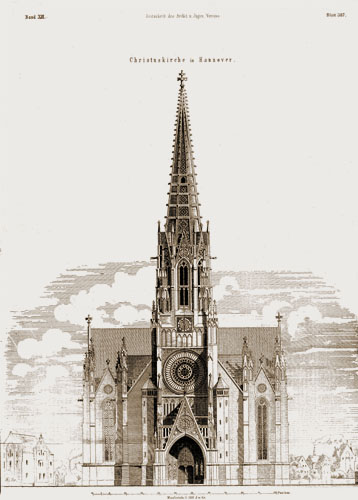


In 1866 Prussia annexed the Kingdom of Hannover. It became a Prussian province. Prussian legislation led to substantial liberalisation. After the foundation of the Empire in 1871, economic development was stimulated further, and many new industrial plants were created. The downside of advancing industrialisation was an increase in social problems.
With the incorporation of Hannover into the Prussian state, the Polytechnic was put under the responsibility of the Prussian Ministry for Trade, Industry and Public Works. The social status of the building officers for the State Technical Service in Hannover had to be brought up to the higher Prussian level, so as not to degrade the new Prussian province. In 1869 Hannover Polytechnic was granted the right to offer the corresponding higher level courses and to conduct the state exams for Regierungsbauführer and Regierungsbaumeister (government foreman and government architect).
Although the transition to a Polytechnic had been relatively rapid, the further development of the college between 1854 and Karl Karmarsch’s retirement in 1875 was rather slow. The general trend at technical colleges towards placing engineering on a more scientific footing was not pursued under the aegis of Karmarsch.
Towards the end of Karmarsch’s incumbency, a growing disparity could not be overlooked between Hannover and most other similar German technical institutions, where an understanding of the term scientific as seen by the universities was becoming increasingly accepted.
Apart from educating officers for the State Technical Service, the college in Hannover provided practically relevant training for engineers who could quickly apply their skills in trade and industry.
The greatest discrepancy between Hannover and the more advanced institutions lay in the college’s constitution, which had hardly been altered since its foundation. There was no division into departments, and the teaching staff played no part in the management or administration of the college. The director was not elected; the school was headed by a “permanent director”.
Karl Karmarsch’s 44 year incumbency ended in 1875. Under his successor, the civil engineer and economist Wilhelm Launhardt, began the accelerated development of the college into an Institute of Technology.








